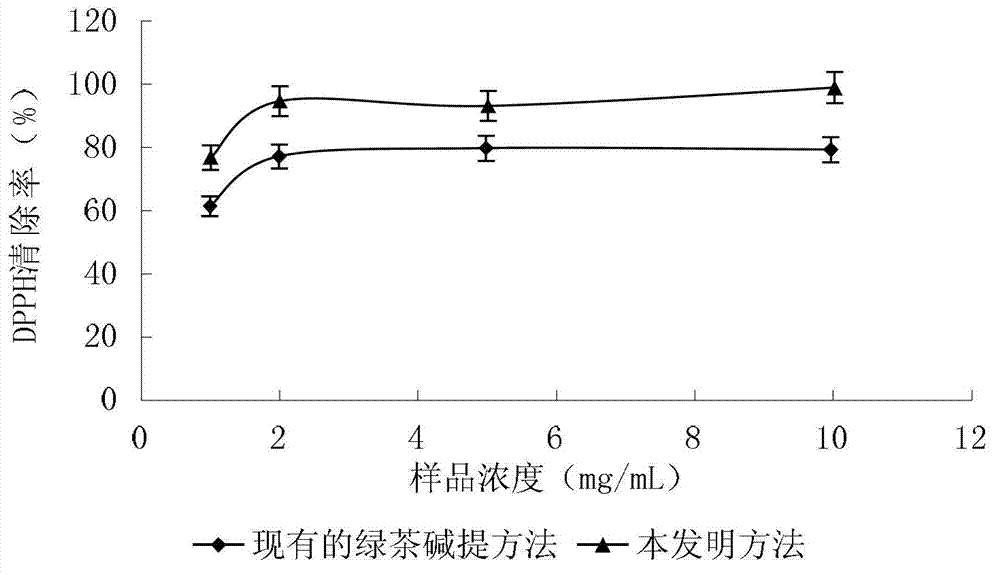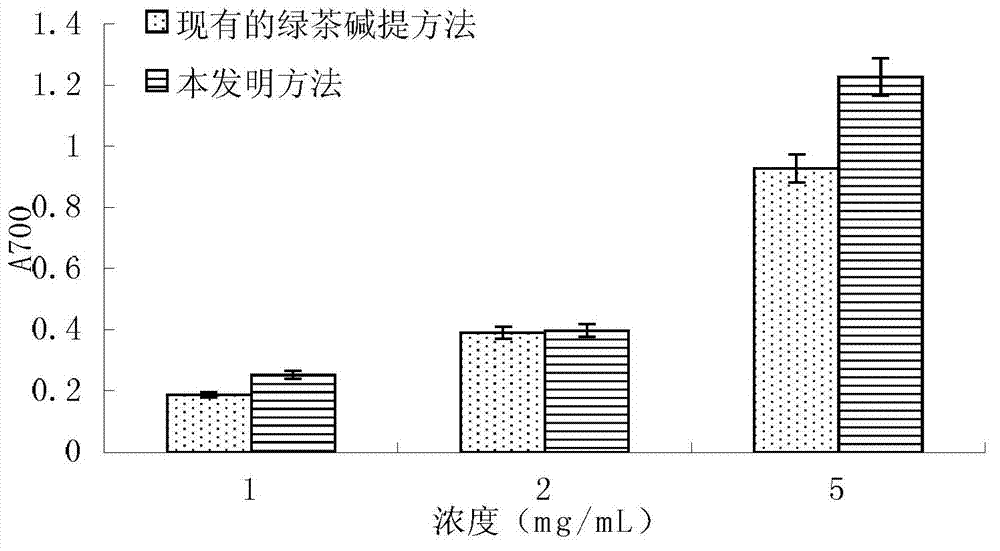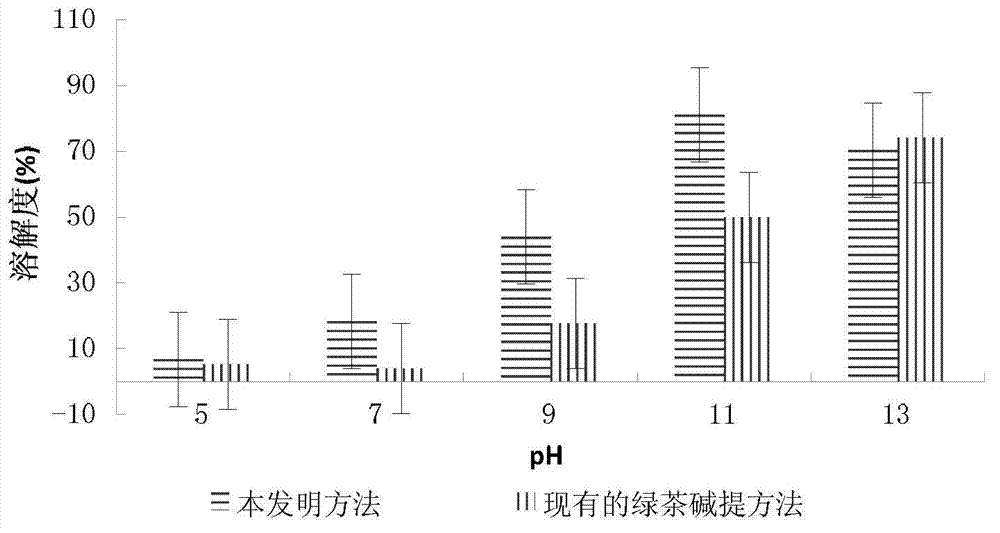Method for extracting active protein from rough old tea
A technology of active protein and tea protein, which is applied in the research and development of health food and functional food, and the field of extraction of active protein, can solve the problems of unsatisfactory protein yield and activity, large energy, etc., and achieve the improvement of antioxidant activity and resource utilization. High efficiency and energy saving effect
- Summary
- Abstract
- Description
- Claims
- Application Information
AI Technical Summary
Problems solved by technology
Method used
Image
Examples
Embodiment 1
[0027] 1) Compound enzyme pretreatment: add 30g of coarse old tea to an appropriate amount of distilled water until it is completely submerged in distilled water, adjust the pH to 4 with dilute hydrochloric acid, and then add 0.45g of compound enzyme composed of cellulase and pectinase (the weight ratio of cellulase and pectinase is 1: 1), react at a temperature of 40° C. for 1 hour, and inactivate at a temperature of 100° C. for 5 minutes after the reaction;
[0028] 2) Ultrasonic alkaline extraction: Add 1200g of sodium hydroxide solution with a concentration of 0.2M to the above reaction solution, then stir and extract in an ultrasonic cleaner for 1 hour, set the ultrasonic power to 24KHz, then filter under reduced pressure, collect the filtrate and Obtain the tea leaves test solution containing tea protein;
[0029] 3) Isoelectric point precipitation: add concentrated hydrochloric acid to the above tea leaves for test solution to adjust the pH of the solution to 4.5, and t...
Embodiment 2
[0037] 1) Compound enzyme pretreatment: Add 30g of coarse old tea to an appropriate amount of distilled water until it is completely submerged in distilled water, adjust the pH to 4 with dilute hydrochloric acid, and then add 0.15g of compound enzyme composed of cellulase and pectinase (The weight ratio of cellulase and pectinase is 1: 1), reacted at a temperature of 40° C. for 3 hours, and inactivated at a temperature of 100° C. for 5 minutes after the reaction;
[0038] 2) Ultrasonic alkaline extraction: Add 600g of sodium hydroxide solution with a concentration of 0.1M to the above reaction solution, then stir and extract in an ultrasonic cleaner for 1 hour, set the ultrasonic power to 40KHz, filter under reduced pressure, collect the filtrate and Obtain the tea leaves test solution containing tea protein;
[0039] 3) Isoelectric point precipitation: add concentrated hydrochloric acid to the above tea leaves for test solution to adjust the pH of the solution to 4.5, and the...
Embodiment 3
[0047] 1) Compound enzymatic pretreatment: add 30g of coarse old tea to an appropriate amount of distilled water until it is completely submerged in distilled water, adjust the pH to 4 with dilute hydrochloric acid, and then add 0.3g of compound enzyme composed of cellulase and pectinase (The weight ratio of cellulase and pectinase is 1: 1), reacted at a temperature of 40°C for 2 hours, and inactivated at a temperature of 100°C for 5min after the reaction;
[0048] 2) Ultrasonic alkaline extraction: Add 900 g of potassium hydroxide solution with a concentration of 0.15M to the above reaction solution, then stir and extract in an ultrasonic cleaner for 2 hours, set the ultrasonic power to 32KHz, filter under reduced pressure, collect the filtrate and Obtain the tea leaves test solution containing tea protein;
[0049] 3) Isoelectric point precipitation: add concentrated hydrochloric acid to the above tea leaves for test solution to adjust the pH of the solution to 4.5, and then...
PUM
 Login to View More
Login to View More Abstract
Description
Claims
Application Information
 Login to View More
Login to View More - R&D
- Intellectual Property
- Life Sciences
- Materials
- Tech Scout
- Unparalleled Data Quality
- Higher Quality Content
- 60% Fewer Hallucinations
Browse by: Latest US Patents, China's latest patents, Technical Efficacy Thesaurus, Application Domain, Technology Topic, Popular Technical Reports.
© 2025 PatSnap. All rights reserved.Legal|Privacy policy|Modern Slavery Act Transparency Statement|Sitemap|About US| Contact US: help@patsnap.com



